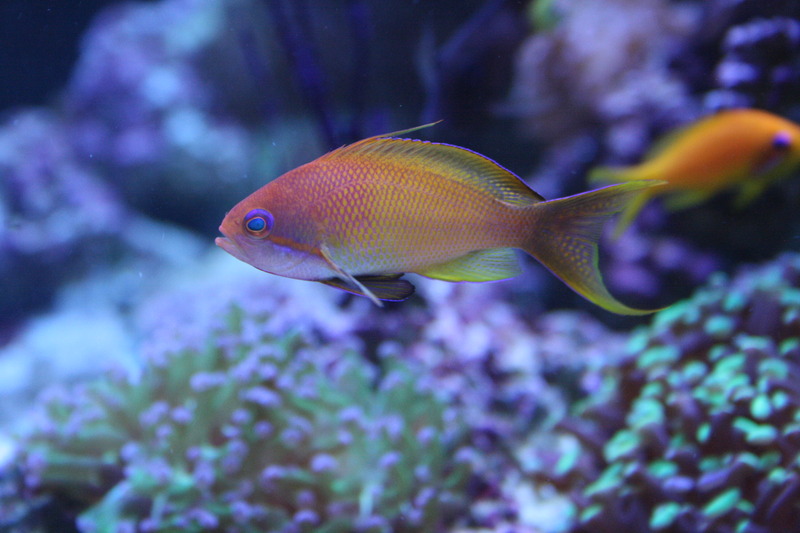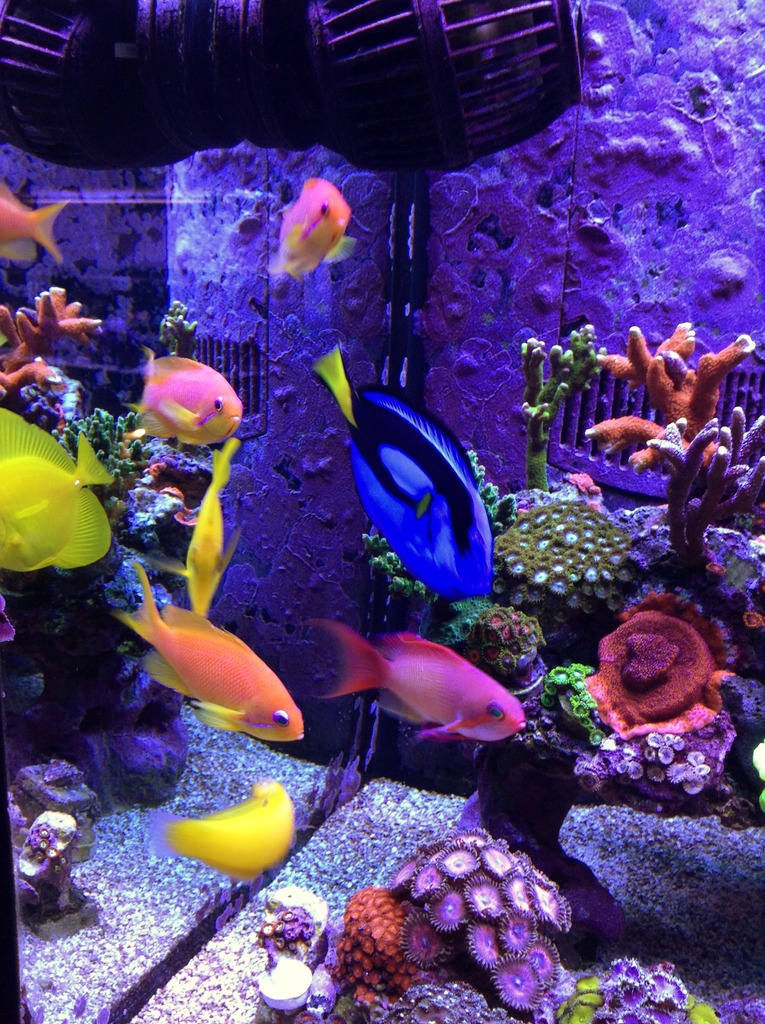melypr1985
totally addicted
View BadgesExcellence Award
Expert Contributor
Article Contributor
Moderator Emeritus
Fish Spotlight: Anthias
Anthias are very popular in the hobby because of their beautiful colors and ability to keep them in groups. Bright pinks, oranges and yellows make them very attractive to hobbyists. The belief that they are “nice” community fish or that they stay small is also attractive to the home aquarist. Now, they can certainly be nice community fish, but most don’t stay very small at all. With sizes that range from three inches to 7 inches, the average size tends to be about 5 inches long at adulthood. They generally need a tank of about 125 gallons to live in.
Photo by: marvinsreef
There are many species of anthias and they all come with different intricacies in their care requirements, but for the purposes of this article, these anthias will be lumped into a big pink and orange group of Anthiadinae. It’s almost funny that these fish are related to groupers, basses and basslets. In the wild, anthias will shoal in large numbers (often 100’s of them) around the reef. Inside each shoal there are subgroups or harems. Most harems consist of anywhere from two to a dozen females, a dominant male and maybe even a submale or two. The dominant male is aggressive, protective of his territory and females and the most colorful of the group. The submale (subdominant), is less colorful than the dominant, not aggressive or protective or even competitive unless the dominant male dies.
Photo by: Tanggirl12
With anthias, every fish is born a female. The largest of the group usually develops into the dominant male. It is possible to have other males in a harem, as I mentioned above and even though they will display a similar color pattern as the dominant male, it will be more subdued. If or when the dominant male dies, the largest most dominant female’s hormones will flood with testosterone and she will become the dominant male. This can be a problem if there is a submale present in the harem because he will certainly see a chance to move up to the “head of household”. The female with hormones raging and the submale with ambition and stars in his eyes may duke it out and the winner will surely be the new man of the house. It’s best to keep just one anthias or a group of three or more. If you only have two anthias the male will surely dominate the lone female to death. More females are needed to spread the “love” or, more accurately, the abuse around more evenly.
Photo by: unknown
I have 3 lyretail anthias in the display at work. One female, one submale and one dominant male. This came about because the old dominant male got sick and was unable to dominate his two females enough to keep his position. The largest of the females turned into a male before the other had healed and took over. So, now the old male, who is completely healed up and who’s colors faded quite a bit after the takeover, is allowed to stay in the group but as a non-competing male.
Terrible video by: melypr1985 ** these are the actual anthias in the display at my work. For about 3 seconds lol
Anthias can be difficult to keep in the home aquarium. There are some that are more difficult than others and getting them to eat seems to be one of the hardest parts. On the reef they eat mostly zooplankton so that might be the best way to get them eating in the home aquarium. They will also eat mysis shrimp, fish eggs, brine and other meaty choices. They can be gotten to eat pellets and sometimes flakes with some patience. Ideally, they should be fed multiple times a day, though that’s not always possible for everybody.
When picking out your anthias at the LFS you want to always check that they are eating first. Doing this may mean passing on several batches of anthias before you purchase, but it could mean the difference between success and not. Of course, you may order online and not get the chance to see if they eat first. Either way, you’ll want to offer a wide variety of choices until they pick something they want to eat. You can get them to branch out from there.
Photo by: Voltaire81
As always, quarantine is always recommended. Anthias can be prone to severe infections the cause of which can very. I suggest treating in QT for ich and flukes at the least, which will cover the basics. Keep an eye out for signs of velvet and be ready to treat with copper for that. Anthias that don’t eat and are not active in QT will usually end up dropping one by one with red sores on their sides. If you see them staying in a corner or hovering just at the bottom of the tank with clamped fins (you’ll know if it’s weird and not a normal behavior when you see it), then I suggest treating with a broad-spectrum antibiotic to head off these severe infections that I see take down so many anthias. It doesn’t usually take long for the fish to die after they are observed acting strangely and not eating. Putting your anthias through quarantine is truly a great idea to have the best chance of success. It not only gives you the chance to make sure they are healthy, but also to get them eating a variety of foods before they go into the display with other competition for food.
Photo by: ryecoon
A group of anthias can add lots of color and movement to a display tank that is large enough to accommodate them. Keeping them in twos is a bad idea for the poor female in that duo. A good qt protocol is absolutely important and feeding can be difficult at first. Be prepared when you buy your first group of anthias and you’ll have a group of beautiful fish for years to come.





















